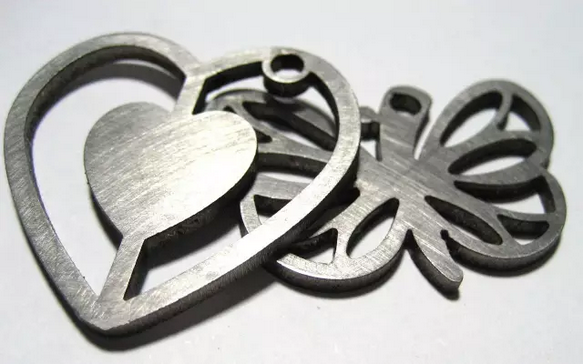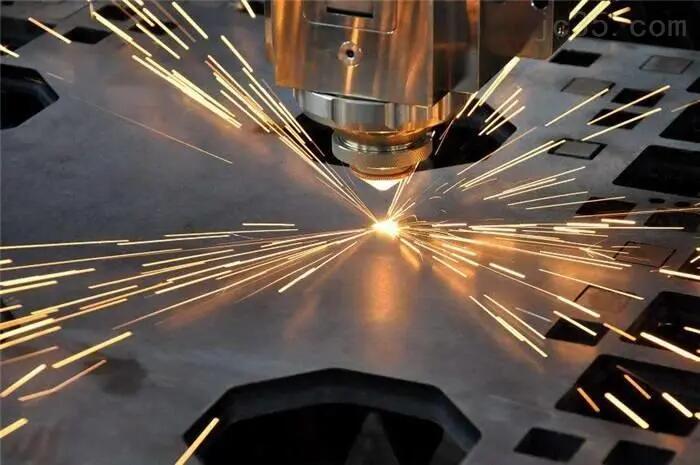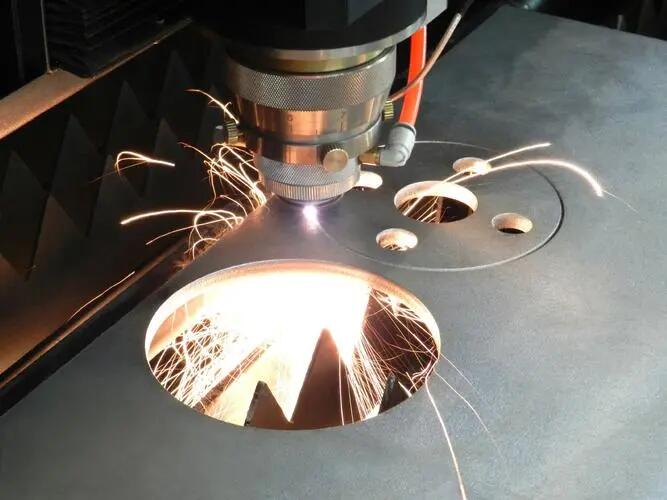With the recovery of the global economy and the rapid development of laser technology, laser cutting systems have been widely used in key industries such as aerospace, rail transit, automobile manufacturing, and sheet metal fabrication. The advent of fiber laser cutting machine is undoubtedly an epoch-making milestone in the entire history of laser cutting. Shearing, punching and bending are traditional methods of sheet metal fabrication. During the processing, these methods cannot be separated from the mold, and hundreds of molds are often assembled during the processing. The widespread use of molds not only increases the time cost and capital cost of the product, but also reduces the accuracy of product processing, affects the repeatability of the product, and is not conducive to changes in the production process. This is not conducive to improving production efficiency.
The use of laser machining technology can save a large number of molds in the production process, shorten production time, reduce production costs, and improve product accuracy. Laser cutting of stamping parts can also ensure the accuracy of mold design. Blanking is the previous painting process, and its size is usually modified. The size of the blanking die can be determined more accurately through the trial production of laser cutting and blanking parts, which has become the basis for mass production of sheet metal fabrication.

Why the fiber laser can be used as the light source of the cutting machine to quickly occupy the market in a short time and be widely respected by everyone? In summary, the main points are as follows:
1. The short wavelength of fiber laser is 1070nm, which is 1/10 of the wavelength of CO2 laser, which is conducive to being absorbed by metal materials, making it cut carbon steel, stainless steel, pure aluminum, brass and other highly reflective materials. Fiber laser cutter has a faster cutting speed than traditional CO2 laser cutter.
2. The laser beam quality is high, so that a smaller spot diameter can be achieved. Even in the case of a longer working distance and a deeper depth of focus, it can still provide a fast processing speed and greatly reduce workpiece tolerances. Take the IPG 2000W fiber laser generator as an example, the cutting speed of 0.5mm carbon steel can reach 40m/min.
3. Fiber laser generator is the laser generator with the lowest overall cost, which can save a lot of costs. Since the electrical-optical conversion efficiency of the fiber laser is as high as 30℅, the utility cost of electric power and cooling is reduced. Taking the same power 2000W fiber laser and CO2 laser cutting 2mm thick stainless steel with liquid nitrogen as an example, the fiber laser saves 33.94 yuan per hour than the CO2 laser. Based on the 7,200 hours of work per year, the electricity cost alone will cost a 2000W fiber laser. Compared with the same power CO2 laser, it can save up to 250,000 yuan per year. At the same time, the cutting speed of the fiber laser is twice that of CO2, and the subsequent maintenance and space savings make the fiber laser cutting machine the preferred sheet metal fabrication of many manufacturers.

![Y10(5VL9]D3ARRJK5E(IBSK](http://www.jinzhaoindustry.com/uploads/Y105VL9D3ARRJK5EIBSK.jpg)
4. The long pump diode life and maintenance-free make fiber lasers the preferred choice of various manufacturers. The fiber laser pump source uses carrier-grade high-power single-core junction semiconductor modules, with a mean time between failures of more than 100,000 hours. Single-core junction semiconductor modules do not require water cooling, and can easily introduce double-clad fibers with extremely high efficiency. No complicated optical focusing and light guide system is required. The single-core junction can produce the same high output power as the array, higher beam quality and longer running time. The active fiber core diameter of the fiber laser is extremely small, which avoids the thermal lens effect of the traditional laser. The energy transmission is carried out in the fiber waveguide without separate components. The fiber grating replaces the cavity mirror in the traditional laser to form a resonant cavity. , No need to adjust and maintain, so that the fiber laser basically does not need to be maintained during use.
5. The fiber laser has the characteristics of small size, light weight, compact structure, and flexible light guide, which is easy to integrate into the motion system. This reduces the complexity of using large cutting platforms; these lighter weight components use fewer components and The lighter structure, which can be moved at high speed, reduces the consumption of sports energy while ensuring accuracy, and at the same time saves a lot of land occupation costs for manufacturers.
6. The fiber laser has ultra-high stability, and can still work normally under certain shock, vibration, high temperature or dust. and its harsh environment, showing a very high tolerance. It is precisely because fiber laser cutters have many unique advantages that will accelerate their expansion in the global laser cutting market. Therefore, the market penetration of high-power fiber lasers will set off a frenzy in the field of system supply. First, fiber lasers are likely to grab market share from CO2 laser suppliers. In the eyes of high-power CO2 laser suppliers, fiber lasers are gradually becoming a growing and highly competitive opponent. Second, fiber lasers can expand the metal laser machine market by absorbing those new system integrators who have not yet shown interest in CO2 lasers. Third, today many global companies with system integration supply flatbed cutting machines. When they encounter new competition, most of the measures they take are to add laser machines to their marketing mix, these three elements are promoting the current changes in the laser cutting market.


